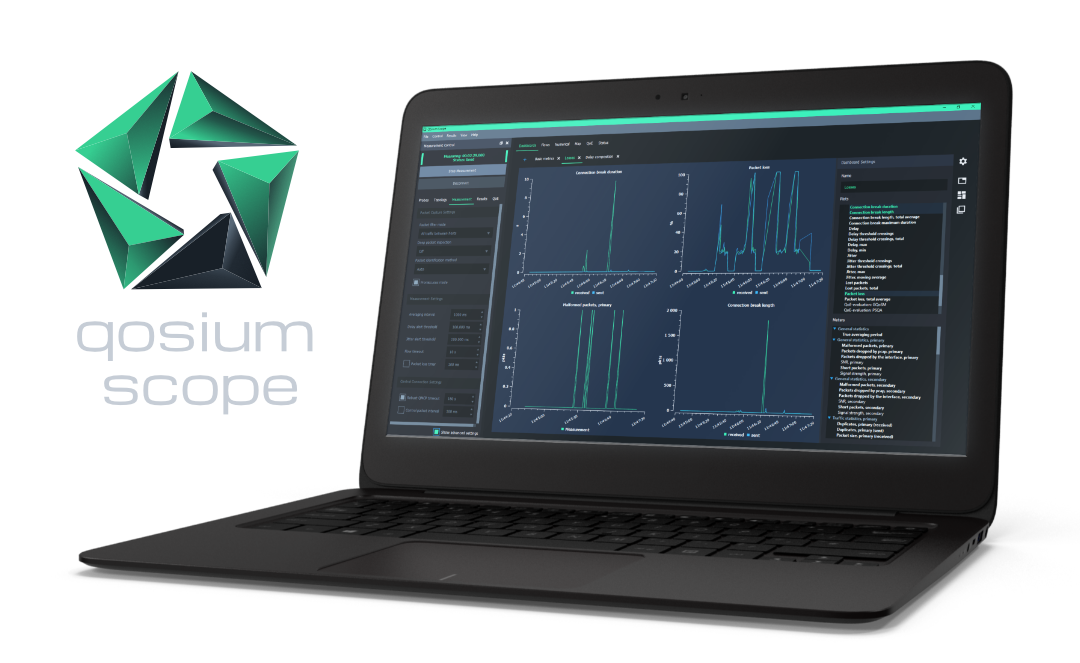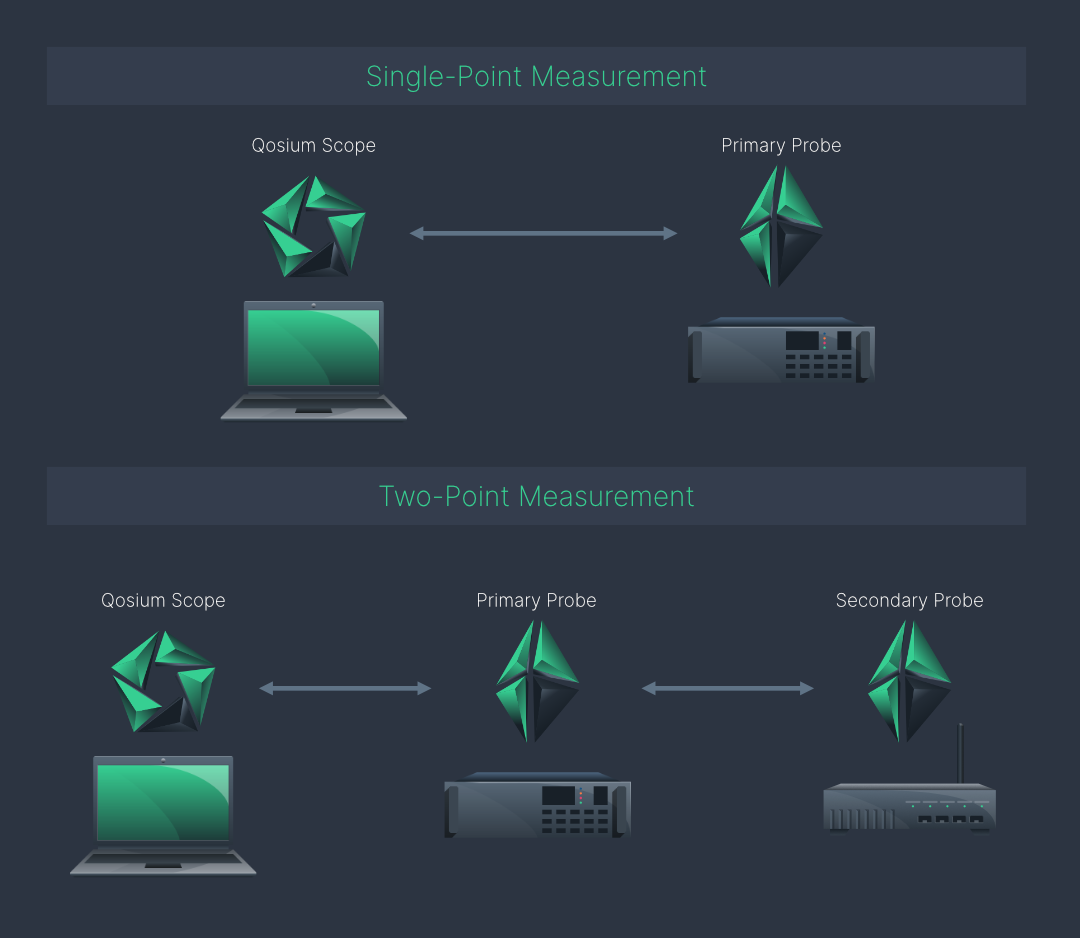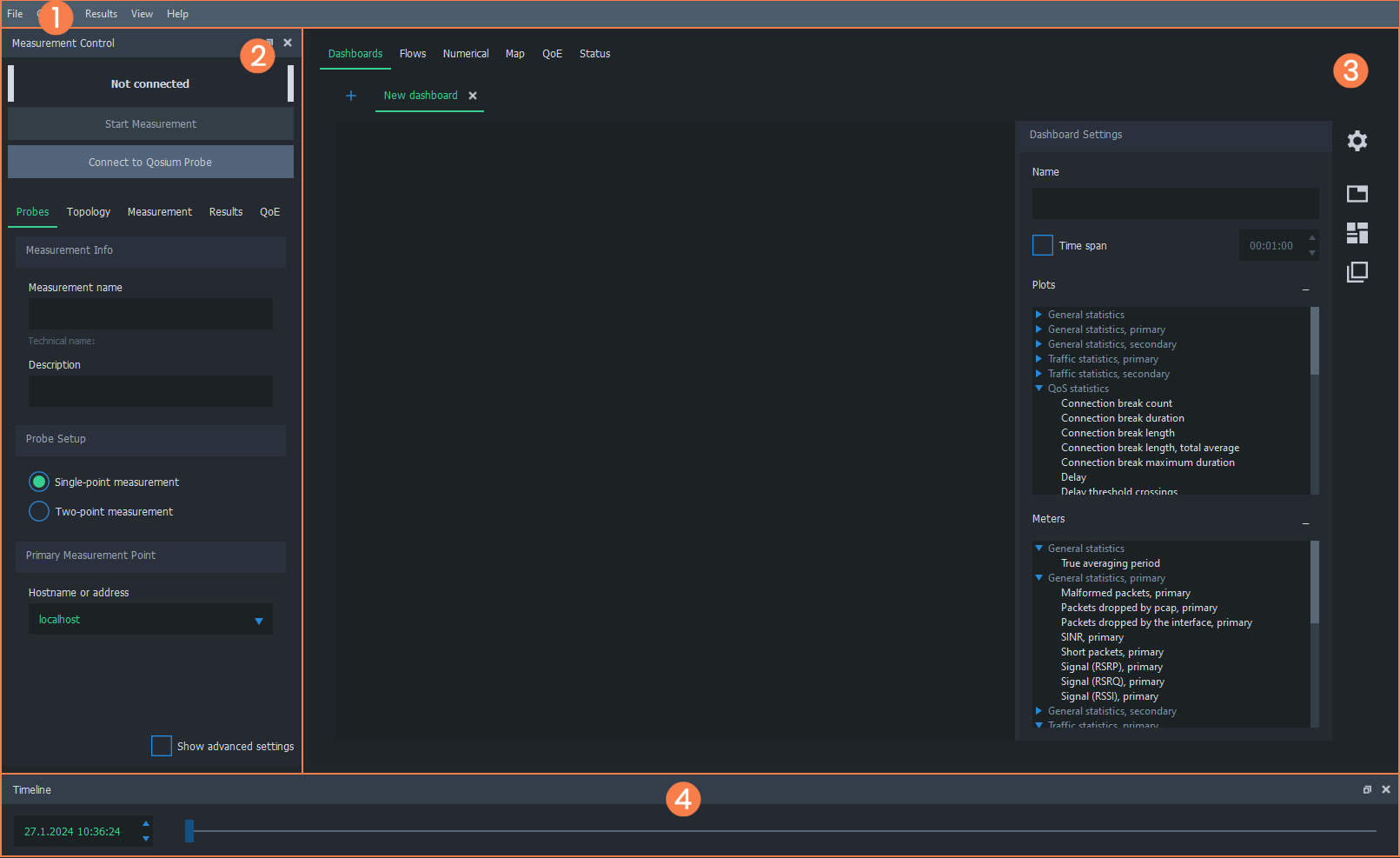Qosium Scope
Qosium Scope is a real-time analyzer for managing Qosium measurements. You can use Scope to activate and control Qosium Probes over a network connection. The essential features of Scope are measurement parameterization, running measurements, results collection, and results visualization. Qosium Scope is an excellent tool for manual QoS and QoE measurements.

1. Overview #
Qosium Scope is the primary tool for carrying out manual measurements in the Qosium product family. It is a controlling entity, which means that it connects to Qosium Probes and uses them to do the measurement work. Scope then collects the measurement results and offers various ways to visualize, store, and process these results.
Qosium Scope is like any other desktop application. It doesn’t require any external hardware and can be run on a regular PC or laptop. With Scope, all features of Qosium measurements are at your fingertips.
Scope has two distinct measurement modes: Single-point measurement and two-point measurement . In single-point measurement, Scope uses one Probe to measure a single network node or point. In two-point measurement, Scope instead uses two Probes to measure a network path.

2. User Interface at a Glance #
After installing and launching Scope, the main window opens up. The window consists of the following elements:
- Menu Bar - Access basic measurement functions, settings, etc.
- Measurement Control - Configure and start/stop measurements
- Workspace Area - View and analyze measurement results
- Timeline – Pinpoint and compare findings across different views

3. How to Get Started with Scope #
See the sub-sections for more information on installation, launching, and on each UI element. To learn how to use Scope to carry out measurements, see Get Started with Qosium.
Qosium Scope is a graphical Qosium measurement control and analyzer software. You can run Qosium Scope practically on any device with a modern desktop environment.
The measurement control panel is used to parameterize and control measurements.
Scope's top menu bar offers application-wide actions and options, such as measurement control, Probe discovery, themes, and measurement settings management.
The workspace area in Scope hosts the result visualization views. In this area, measurement results can be configured, viewed, and analyzed.
Timeline is a useful feature in Qosium Scope to align interesting observations in the results between different statistics and views.
Suggested Pages
Tutorials are the best resource for getting the hang of network measurements with Qosium. These guides are designed for anyone with basic knowledge of computer networks to grasp the basic concepts and workflows of Qosium quickly.

